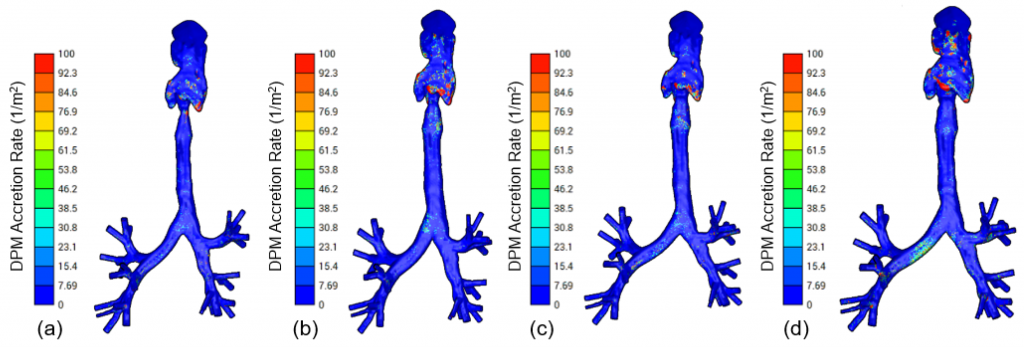 A paper titled “A Parametric 3D Model of Human Airways for Particle Drug Delivery and Deposition” has just been published in MDPI’s Special Issue on Radial Basis Functions and their Applications in Fluids. Led by Leonardo Geronzi and Benigno Marco Fanni, alongside an esteemed group of co-authors from RBF Morph, the University of Rome Tor Vergata, BioCardioLab, ONE Simulations, Grep IT, and Delft University of Technology, the study unveils a revolutionary parametric 3D model of the human respiratory tract. This model is designed for particle drug delivery and deposition, presenting a significant leap forward in personalized therapeutic strategies for respiratory conditions such as asthma and chronic obstructive pulmonary disease (COPD).
A paper titled “A Parametric 3D Model of Human Airways for Particle Drug Delivery and Deposition” has just been published in MDPI’s Special Issue on Radial Basis Functions and their Applications in Fluids. Led by Leonardo Geronzi and Benigno Marco Fanni, alongside an esteemed group of co-authors from RBF Morph, the University of Rome Tor Vergata, BioCardioLab, ONE Simulations, Grep IT, and Delft University of Technology, the study unveils a revolutionary parametric 3D model of the human respiratory tract. This model is designed for particle drug delivery and deposition, presenting a significant leap forward in personalized therapeutic strategies for respiratory conditions such as asthma and chronic obstructive pulmonary disease (COPD).
Researchers optimized drug particle inhalation therapies using patient-specific computational fluid dynamics (CFD) simulations. They created a parametric model for synthetic anatomies, extracted from a CT dataset up to the fourth bronchiole generation. Employing radial basis function (RBF) mesh morphing and a tree structure, they controlled 26 parameters, generating 1000 anatomies. Mesh morphing was vital for high-quality computational grids. Notably, 96% of the synthetic database immediately supported accurate CFD simulations. The study’s outcomes revealed variations in wall shear stress, particle accretion rate, and turbulent kinetic energy across different anatomies, highlighting the substantial impact of anatomical shape on drug delivery and deposition. The successful demonstration of the potential of tree-structure-based RBF mesh morphing in generating parametric airways marks a significant advancement in the field of respiratory drug delivery studies.
This breakthrough research not only provides a deeper understanding of the intricate dynamics within the human respiratory tract but also paves the way for more personalized and effective treatment strategies for patients suffering from respiratory conditions. The international collaboration showcased in this study underscores the importance of interdisciplinary efforts in pushing the boundaries of medical research and technology.
We invite you to explore the full paper by following this link.
